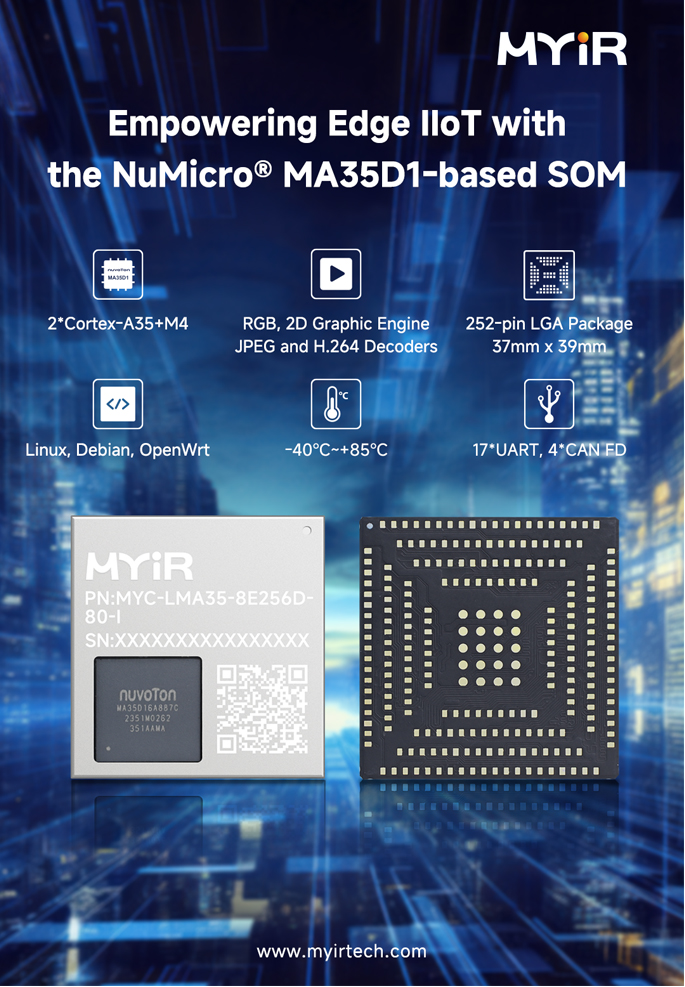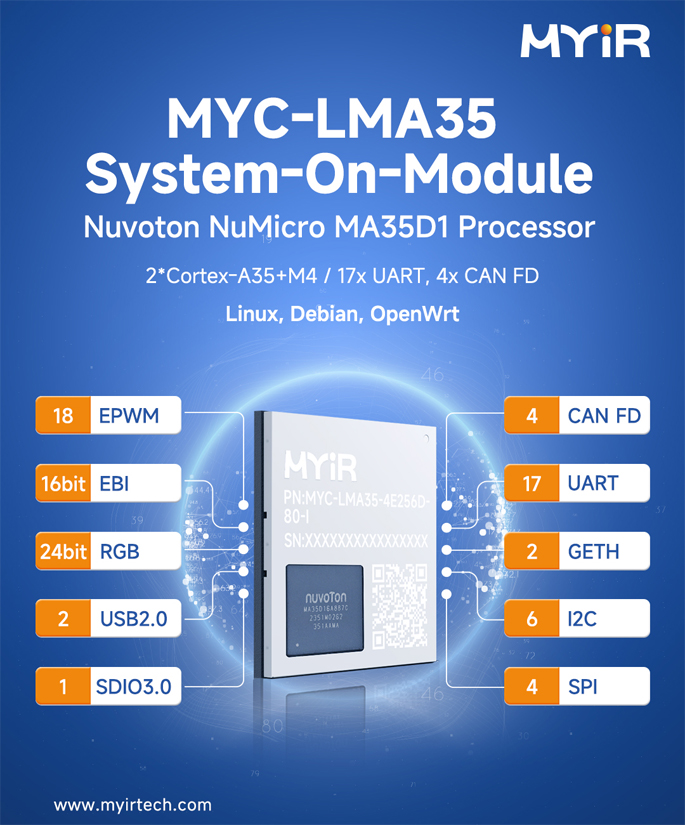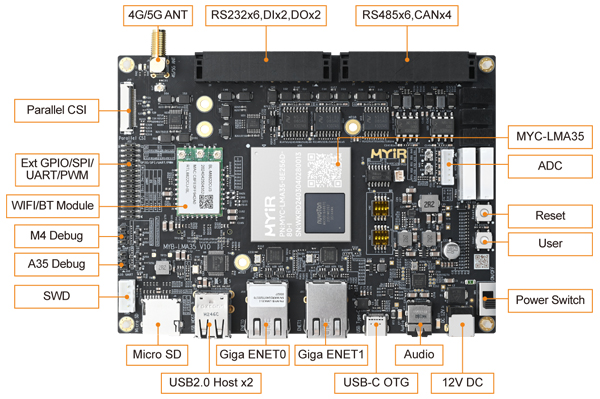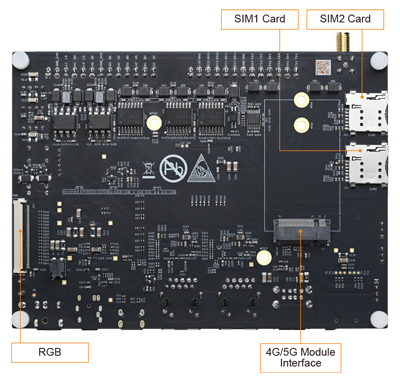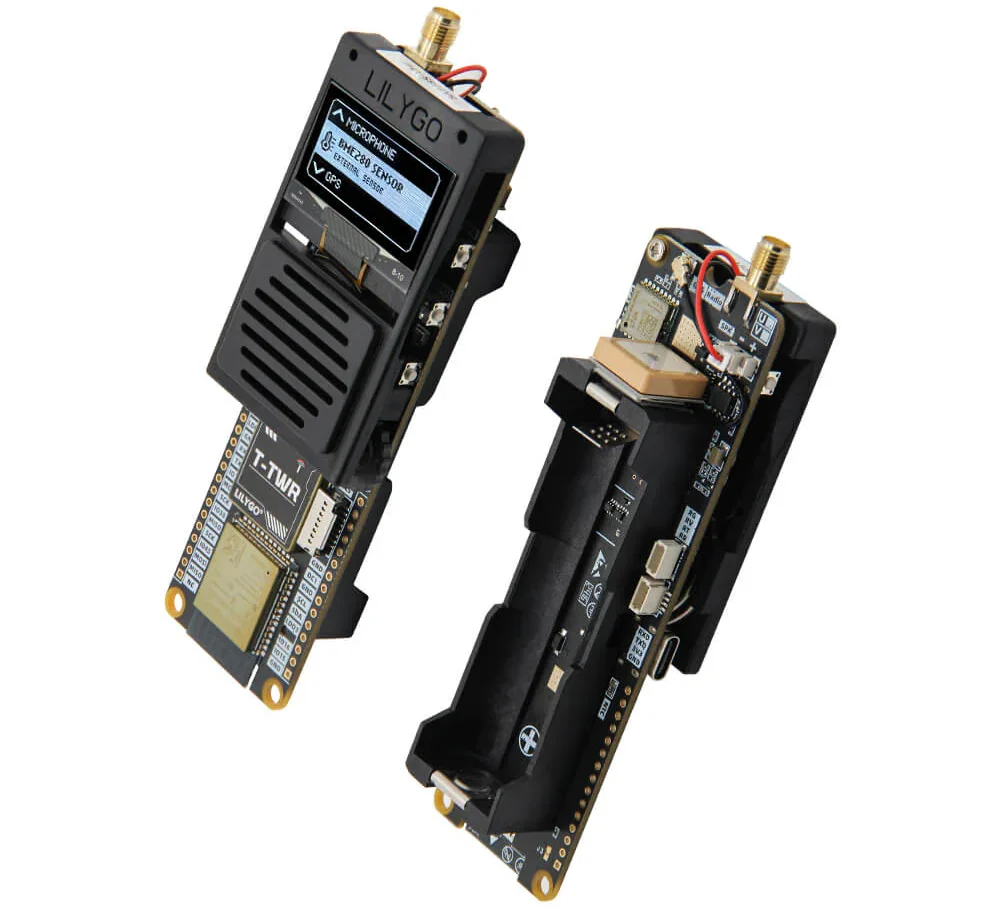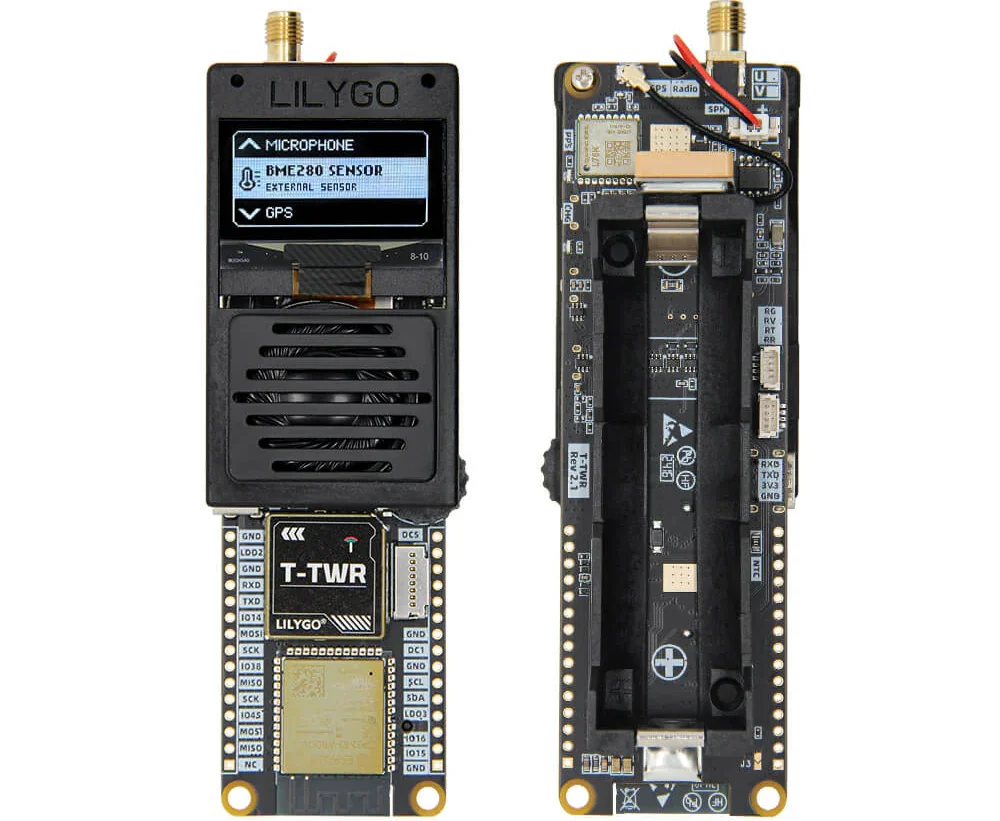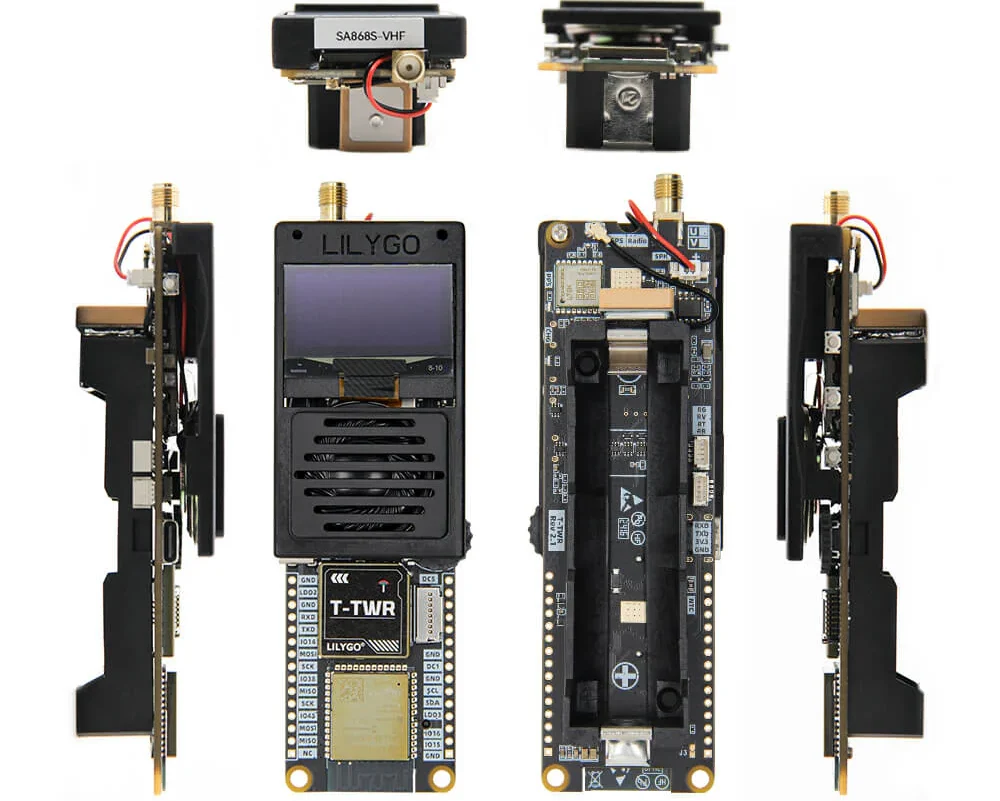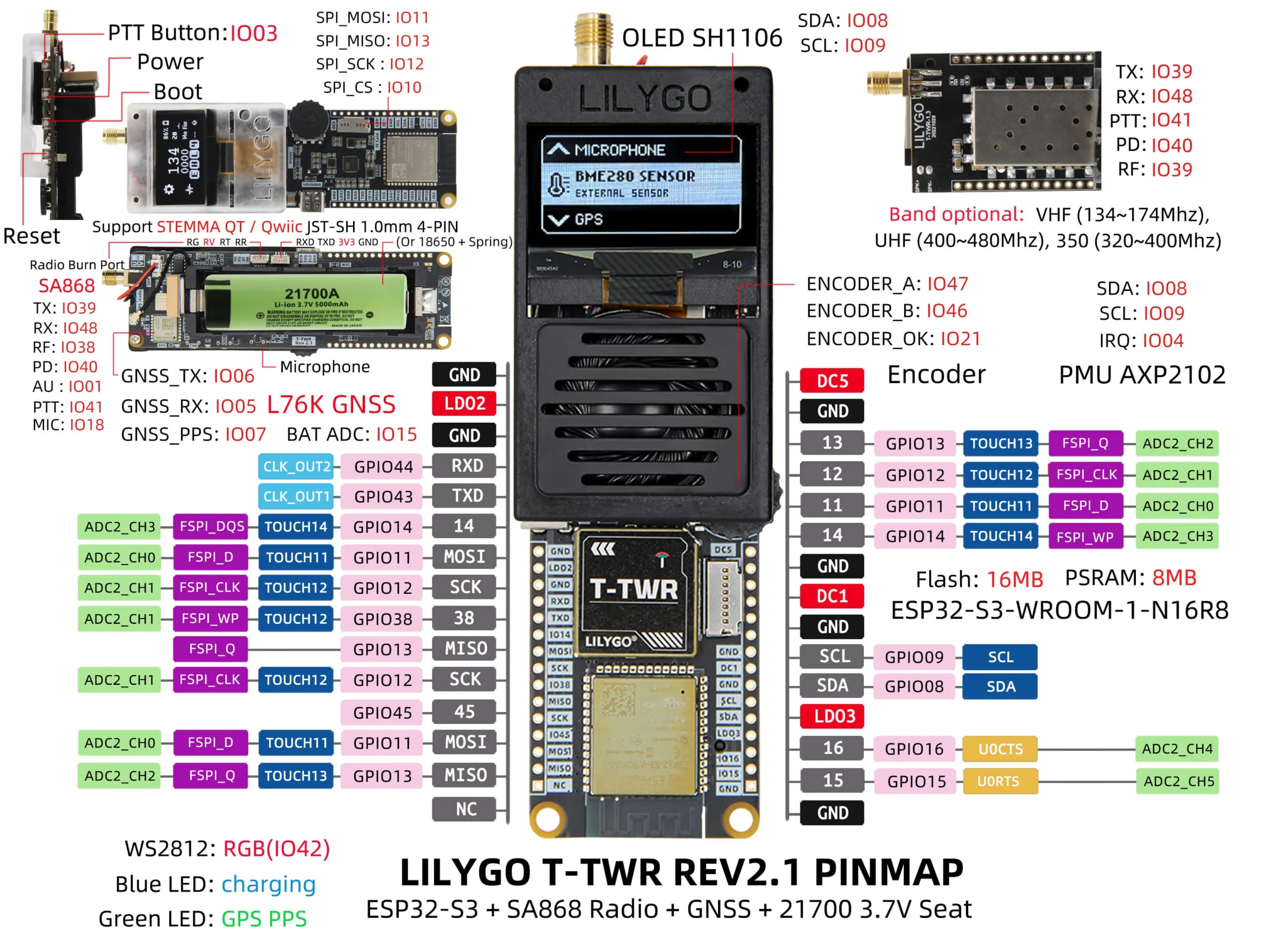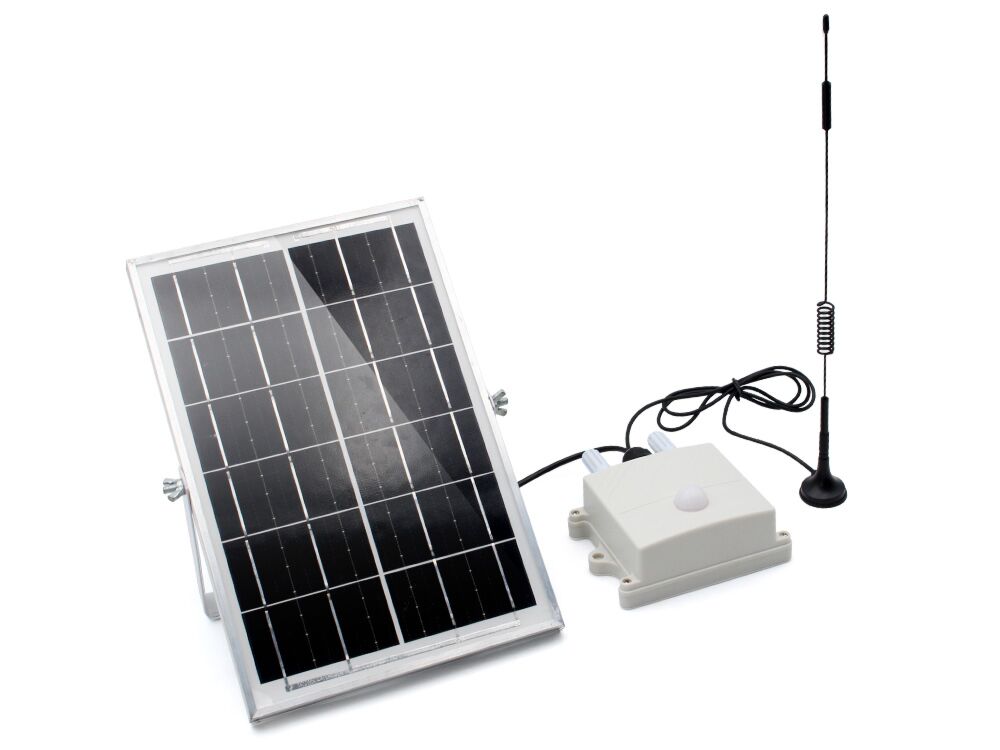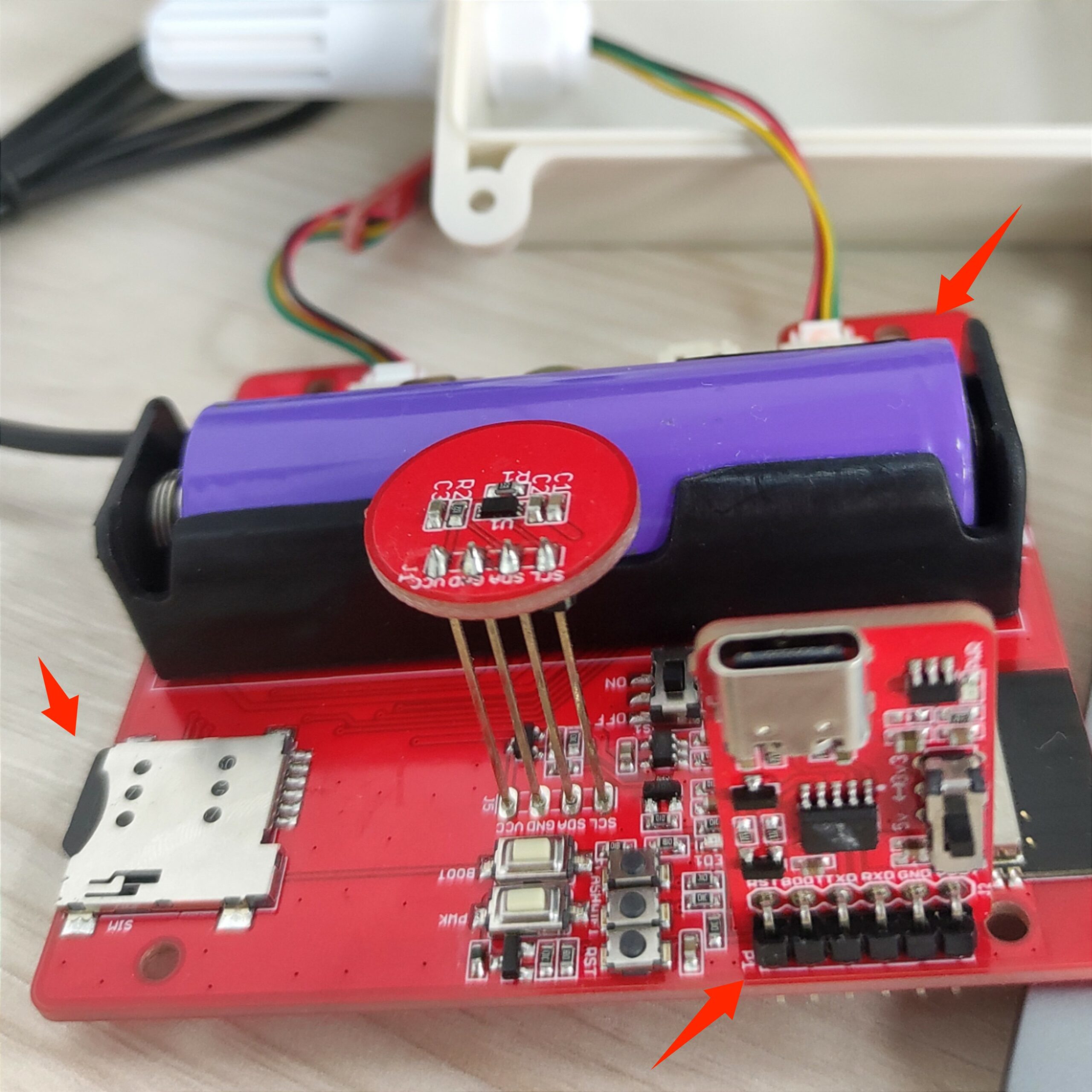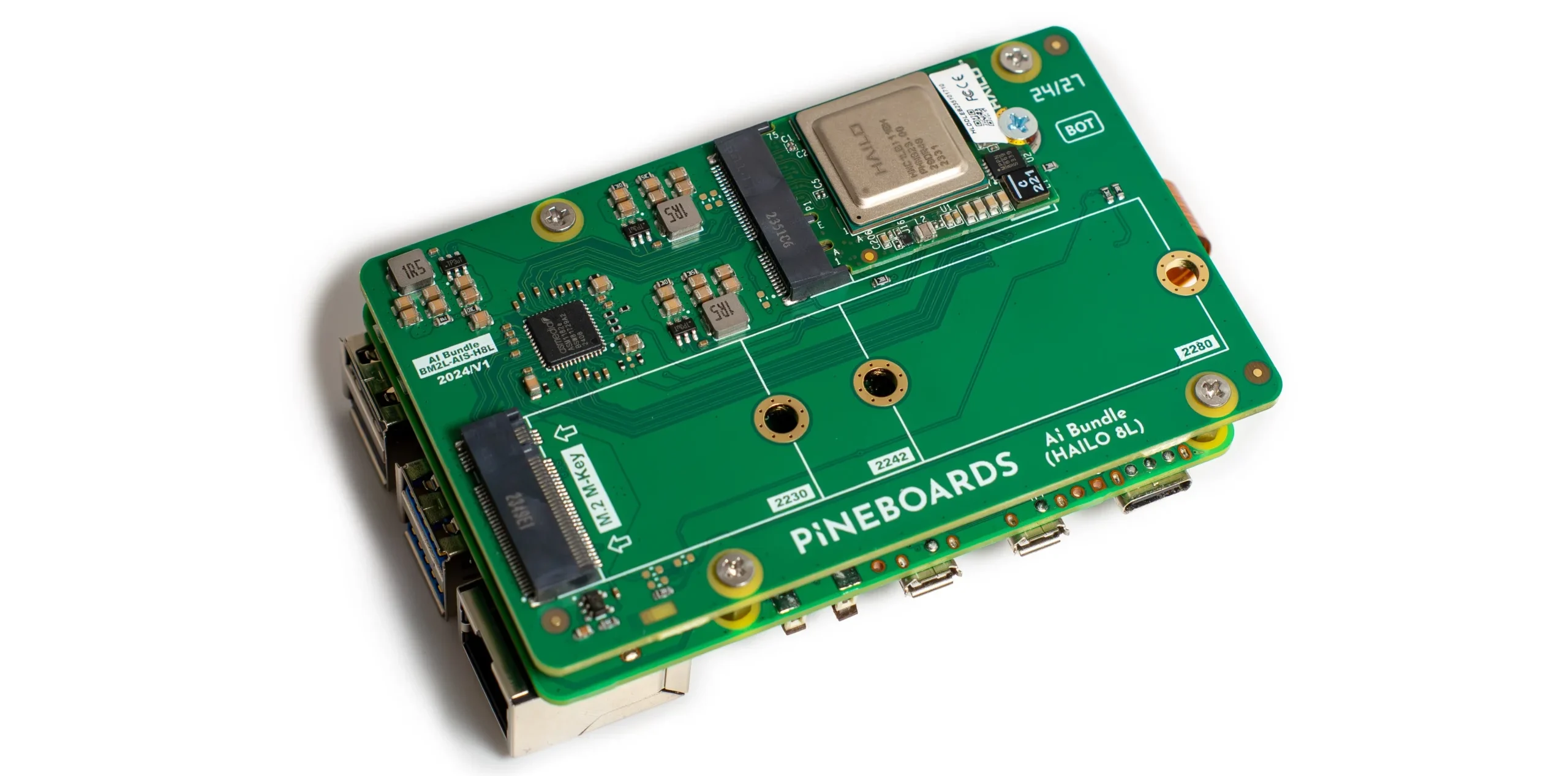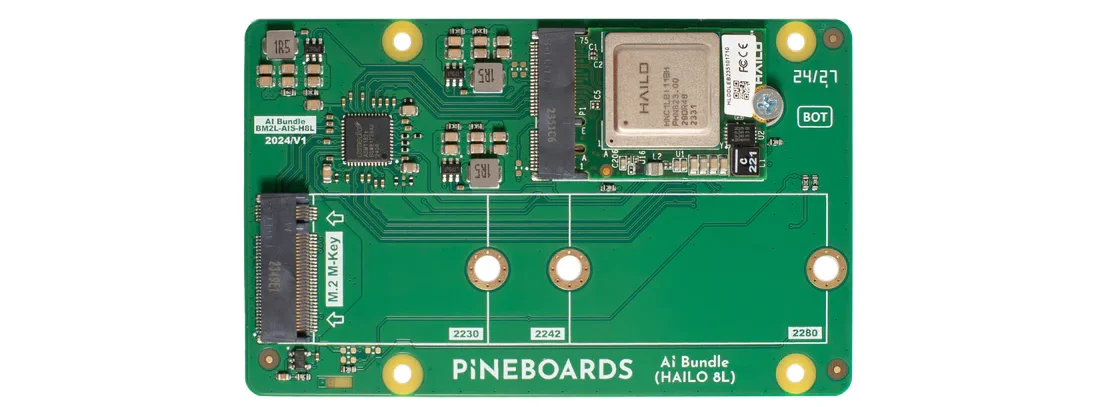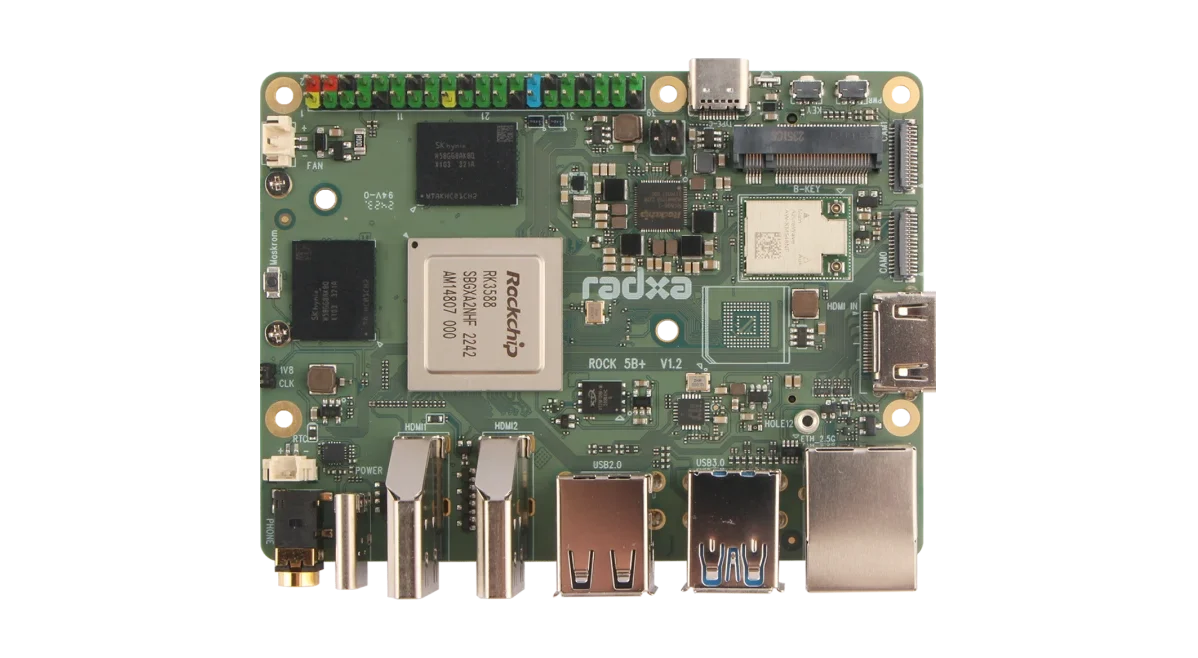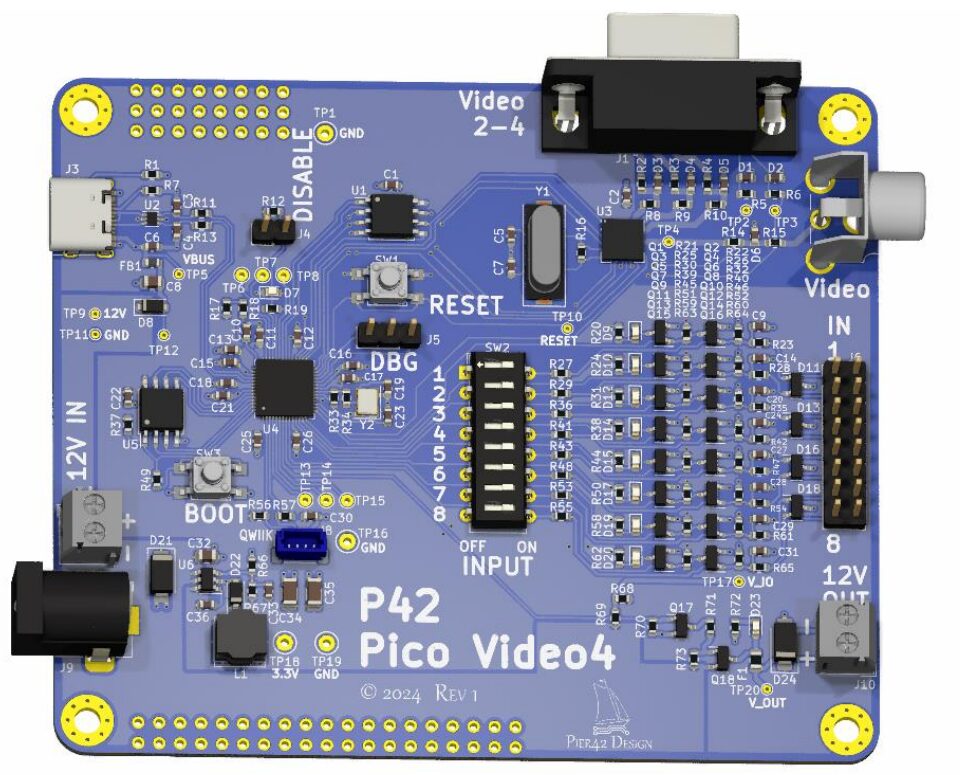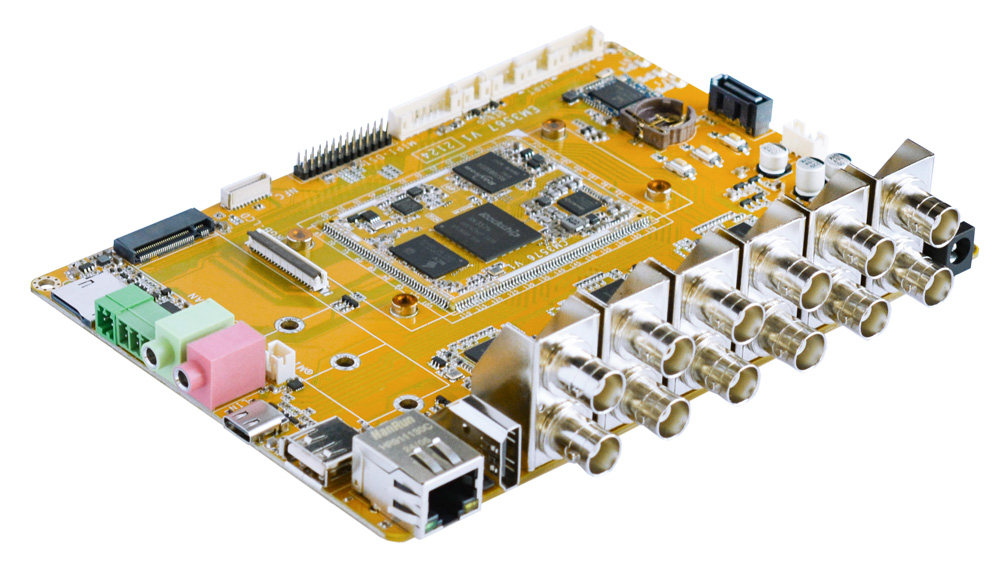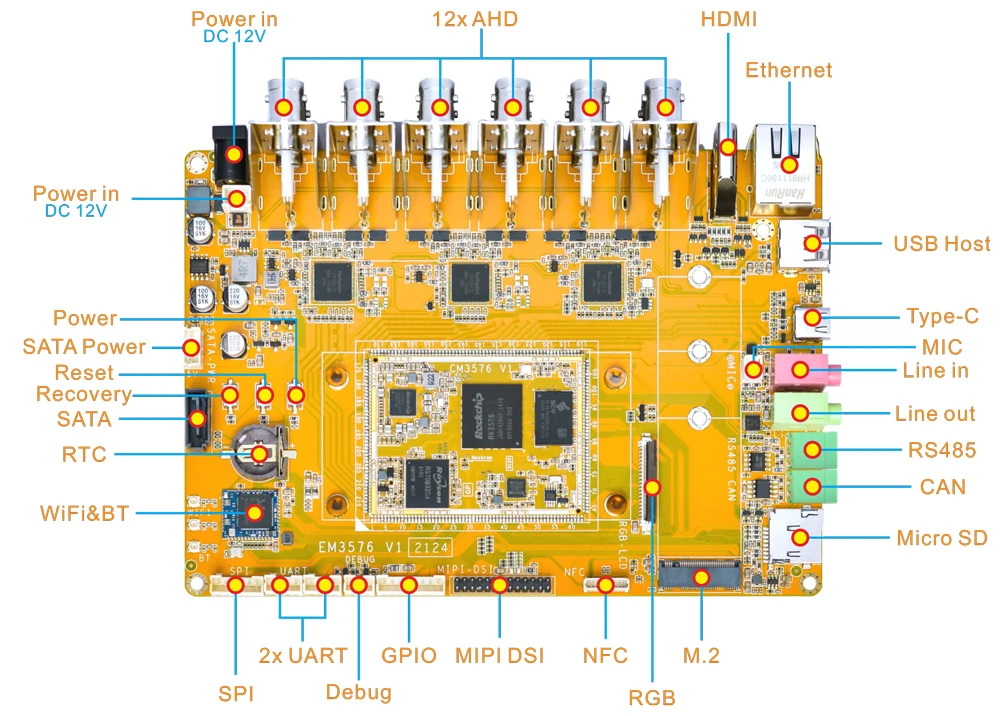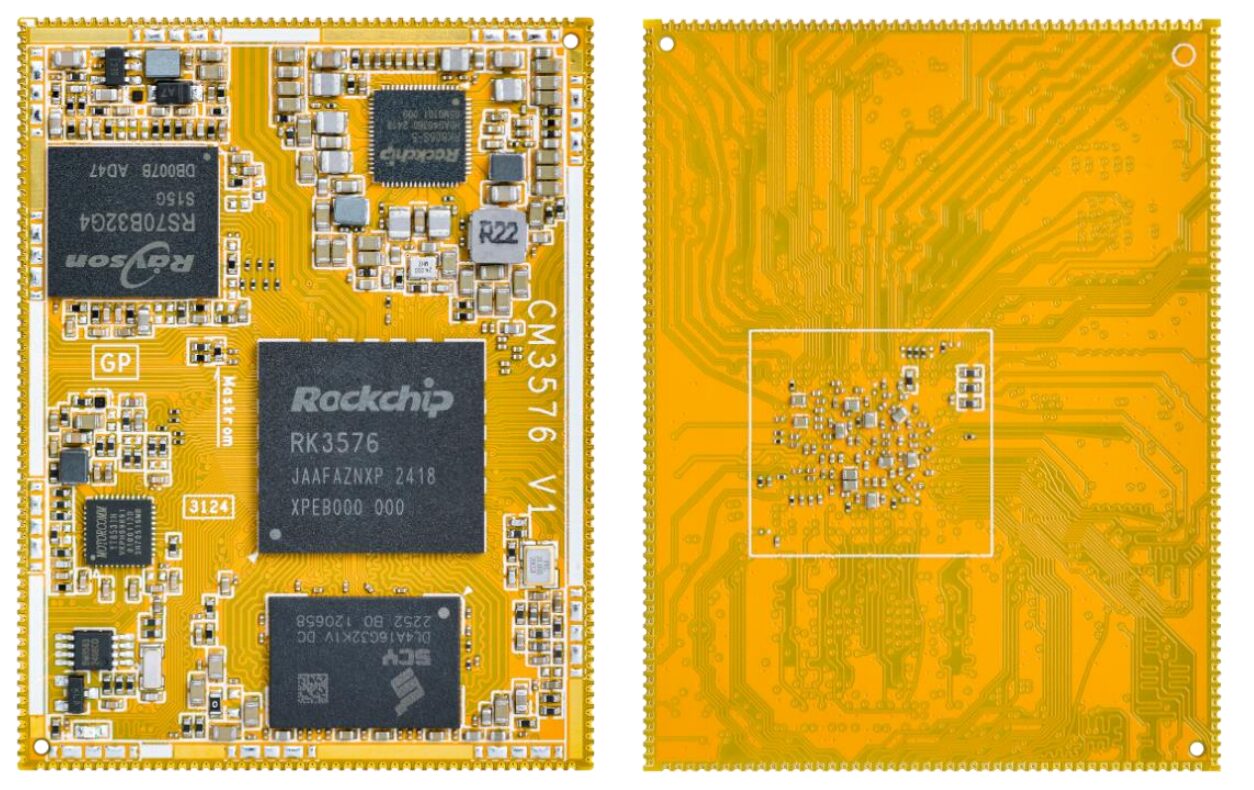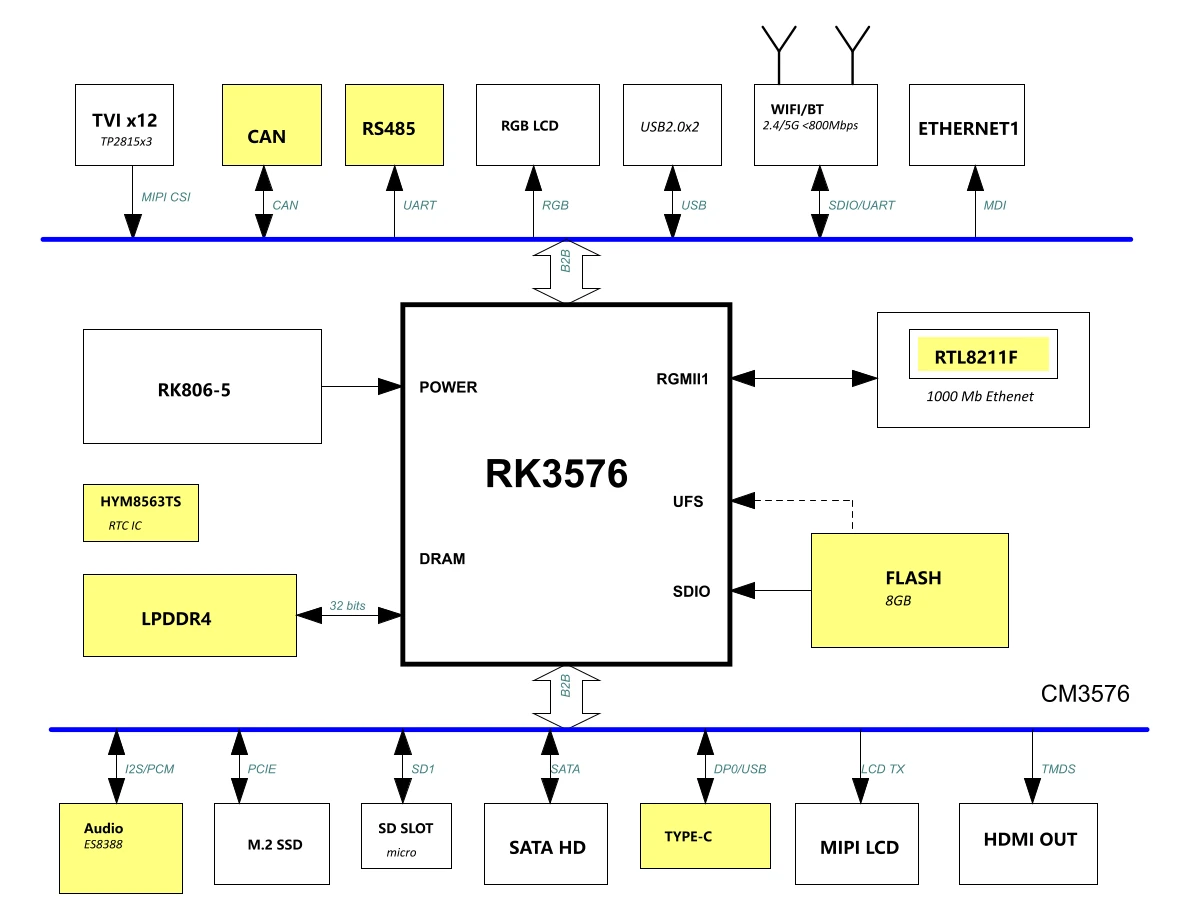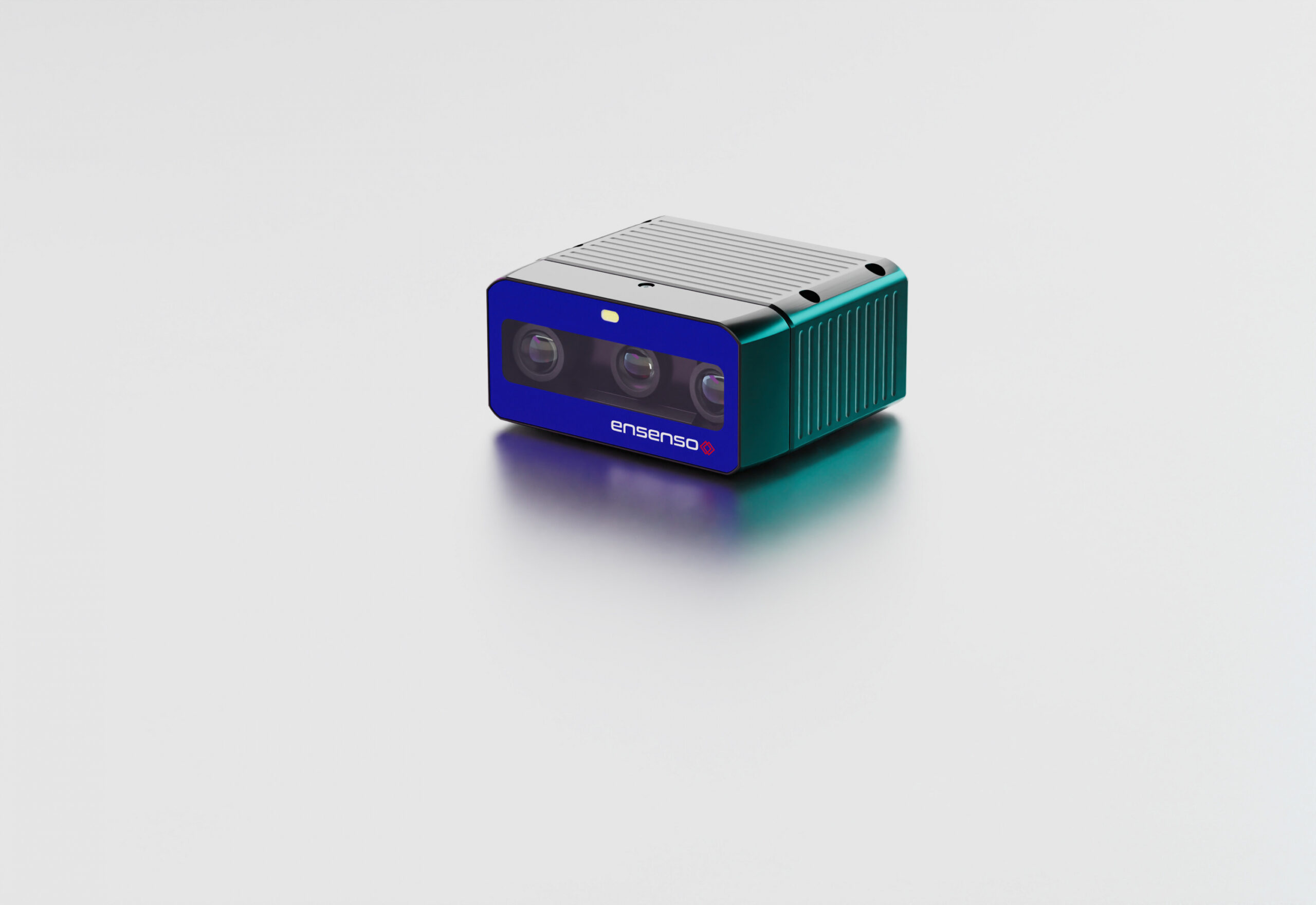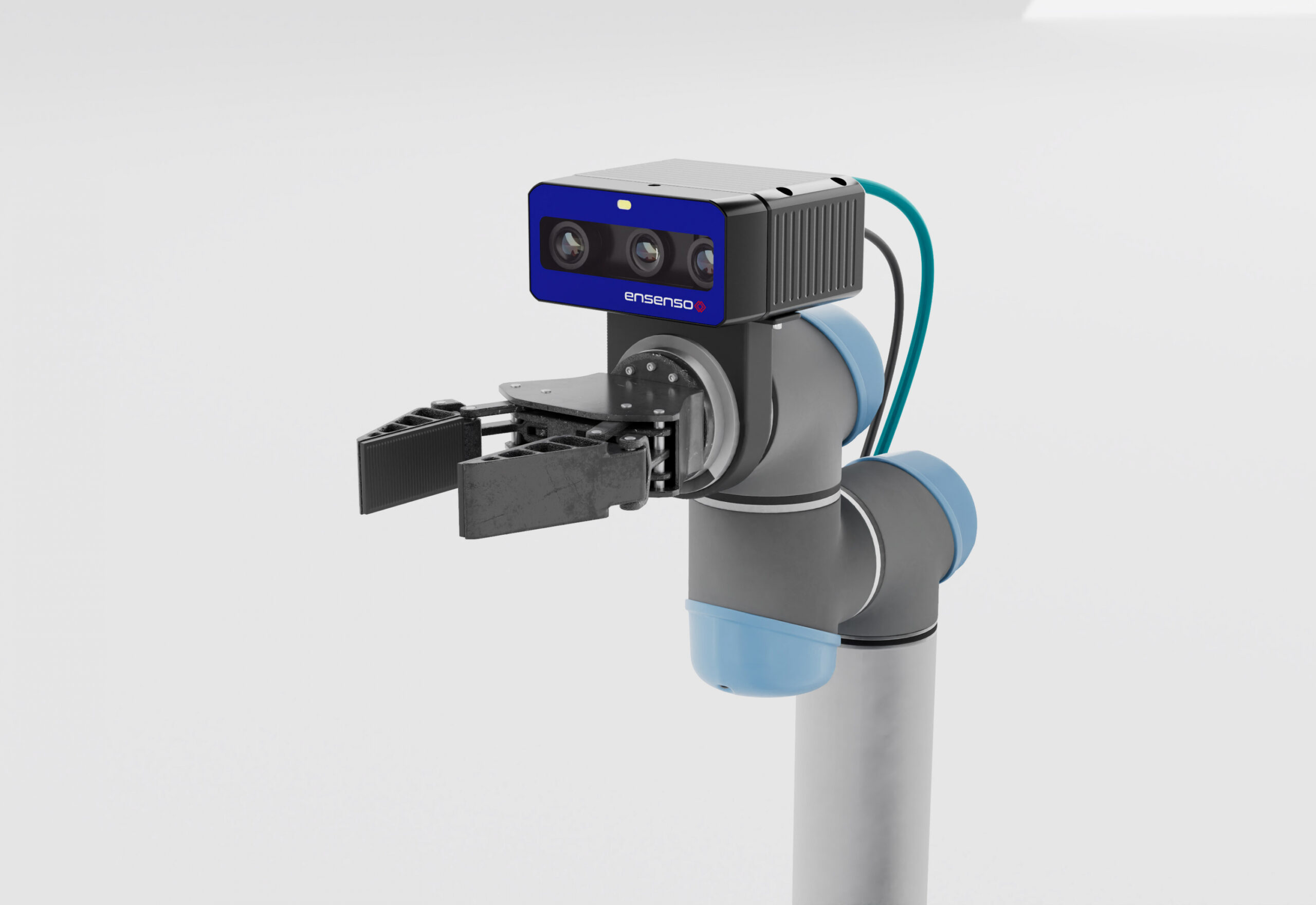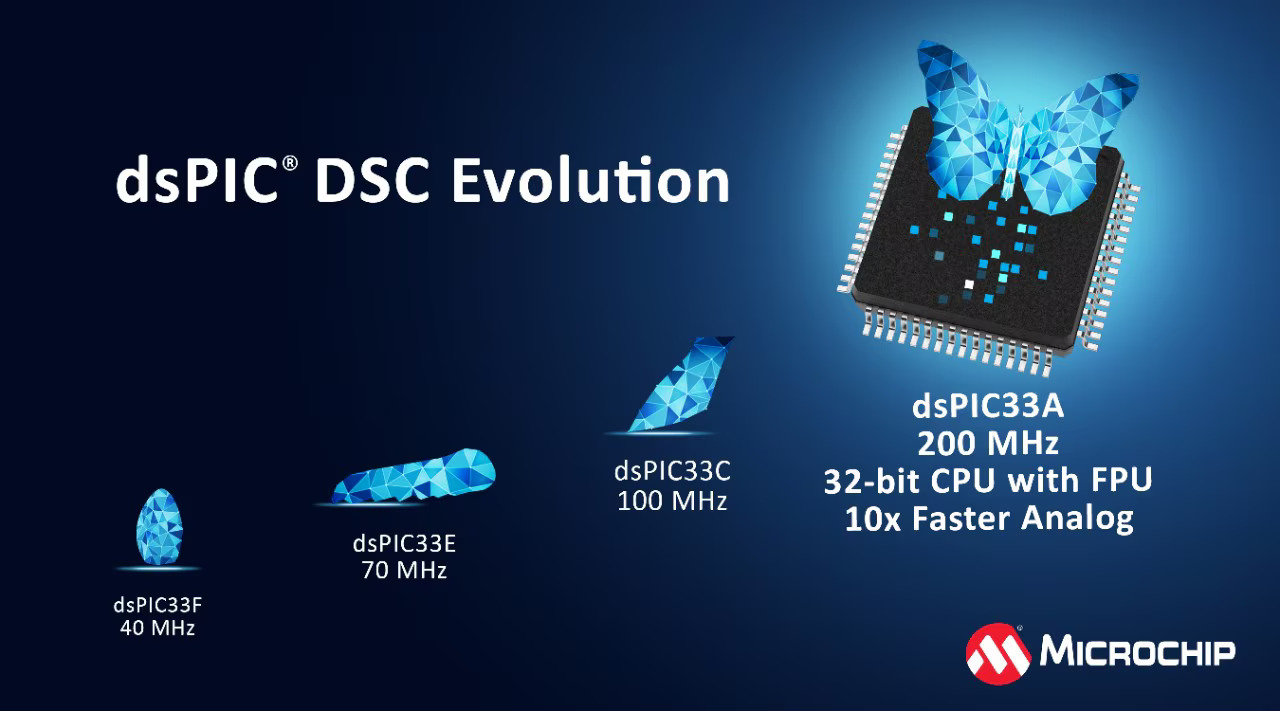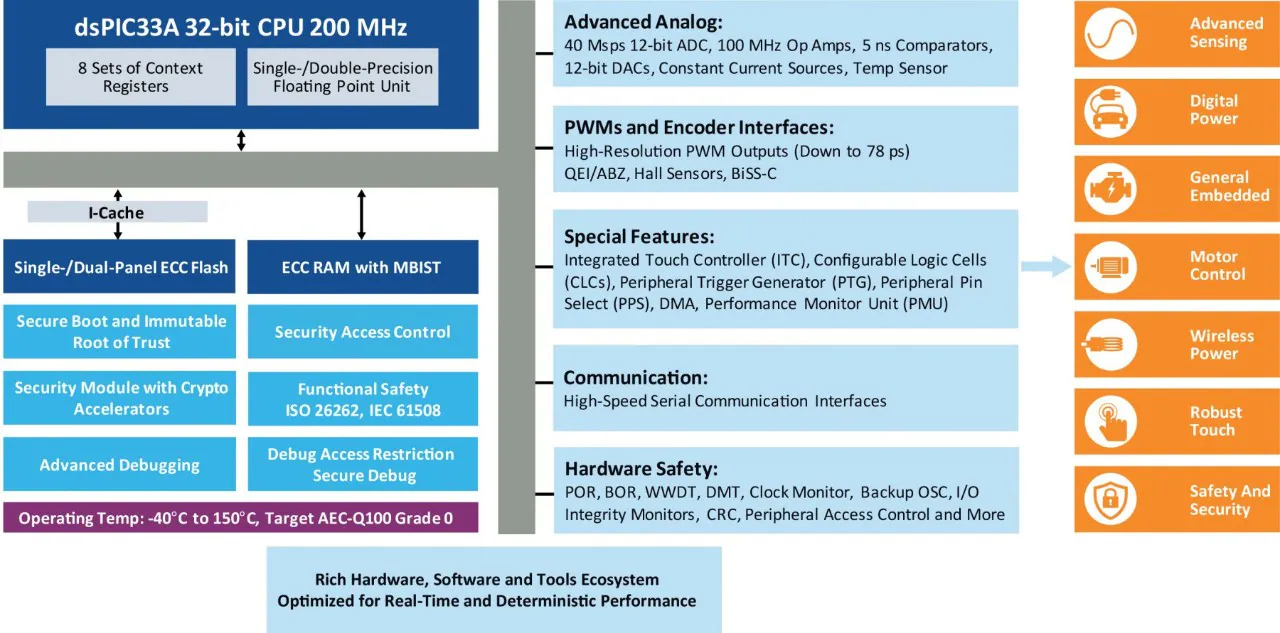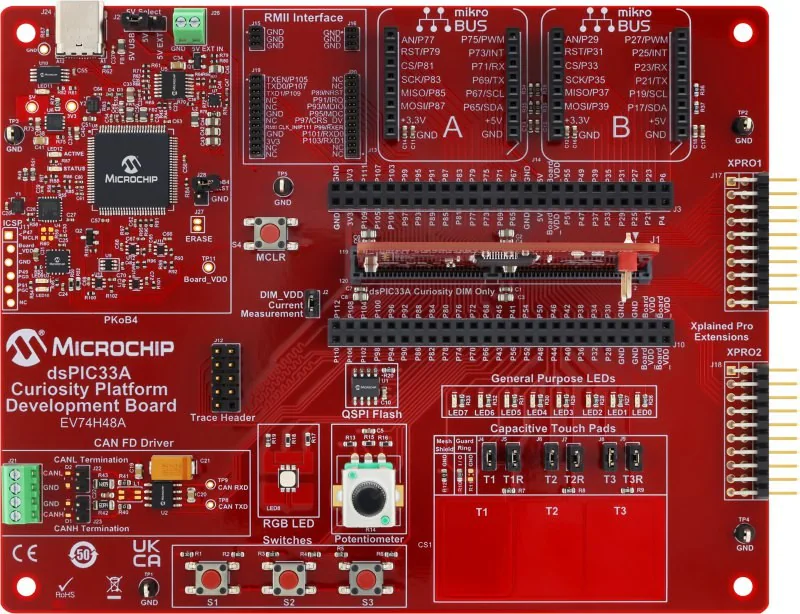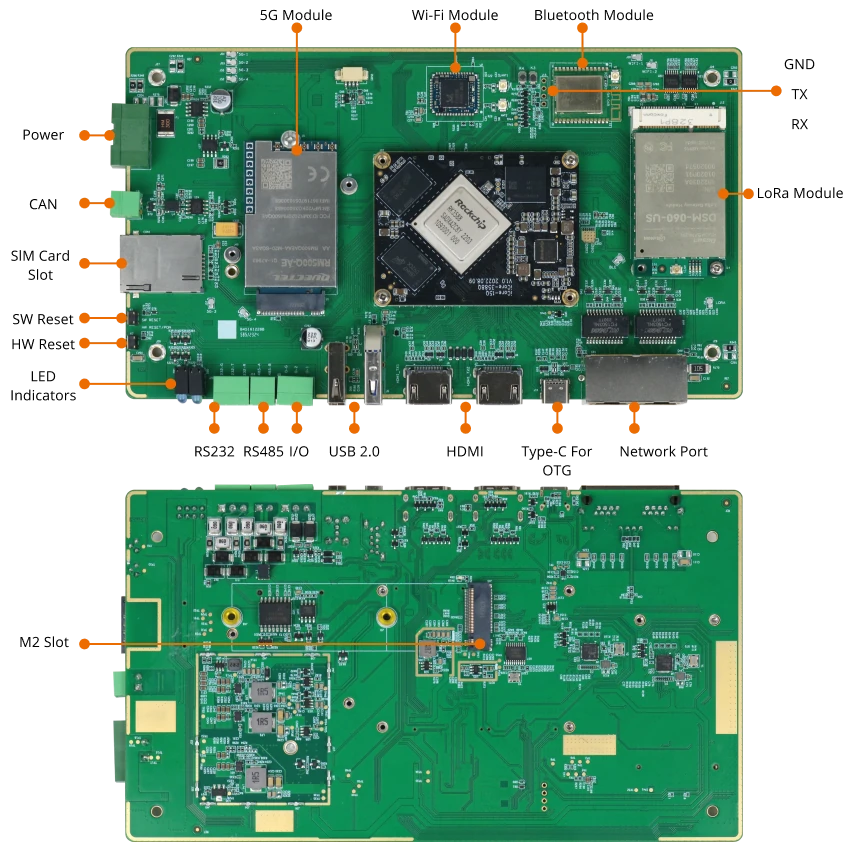
Dusun has introduced the DSOM-042R, a robust system-on-module (SoM) based on the Rockchip RK3588M, an automotive-grade AI SoC. Designed to handle the demanding environments of automotive AIoT applications, the module comes with 8GB of RAM, 128GB of eMMC flash storage, and operates in temperatures ranging from -40°C to 85°C. The module features high-density connectors that expose numerous interfaces supported by the octa-core Cortex-A76/A55 processor.
Key Features of the RK3588M SoC:
- CPU:
- 4x Cortex-A76 cores @ up to 2.1 GHz
- 4x Cortex-A55 cores @ up to 1.7 GHz
- GPU:
- Arm Mali-G610 MP4 with support for OpenGL ES 3.2, OpenCL 2.2, Vulkan 1.1
- NPU:
- 6 TOPS AI accelerator
- VPU:
- Video Decoding: 8Kp60 H.265/VP9/AVS2, 8Kp30 H.264 AVC/MVC, 4Kp60 AV1, 1080p60 MPEG-2/-1/VC-1/VP8
- Video Encoding: 8Kp30 H.265/H.264
- Capable of up to 32-channel 1080p30 decoding and 16-channel 1080p30 encoding
Dusun RK3588M SoM Specifications:
- System Memory:
- 8GB RAM
- Storage:
- 128GB eMMC flash
- 1x 100-pin B2B connector
- 3x 80-pin B2B connectors
- Video Output:
- HDMI 2.1 up to 8Kp60 or 4Kp120
- HDMI 2.0 up to 4Kp60
- 2x MIPI DSI display interfaces up to 4Kp60
- 2x DisplayPort 1.4 up to 8Kp30fps (multiplexed with USB 3.0)
- 2x eDP1.3 connectors up to 4Kp60
- BT.1120 up to 1080p60
- Supports up to seven displays
- Video Input:
- 1x 4-lane MIPI CSI or 2x 2-lane MIPI CSI
- 2x MIPI DC (4-channel DPHY v2.0 or 3-channel CPHY V1.1)
- DVP camera interface up to 150MHz input data
- Audio:
- 2x 8-channel I2S
- 2x 2-channel I2S
- 2x SPDIF
- 2x 8-channel PDM (supports multiple MIC arrays)
- Dual-channel digital audio codec (16-bit DAC)
- VAD (Voice Activity Detection)
- Networking:
- Gigabit Ethernet
- USB:
- 3x USB 3.0
- 4x USB 2.0
- 2x USB 2.0 OTG
- High-Speed Interfaces:
- PCIe Gen 3.0 (x4, or 2x x2, or 4x x1)
- 3x PCIe Gen 2.0 x1
- Low-Speed I/Os:
- 9x I2C
- 10x UART
- 5x SPI
- 16x PWM
- GPIOs
- Analog:
- 7x ADC
- Power:
- Supply Voltage: 5V
- Power Consumption:
- Idle: 1.35W
- Typical: 4.8W
- Max: 20W
- Dimensions:
- 66 x 50 x 5.8mm
- Operating Temperature:
- -40°C to 85°C
- Storage Temperature:
- -40°C to 105°C
- Humidity:
- 10% to 80% (non-condensing)
Operating System Support:
The DSOM-042R supports a variety of operating systems, including:
- Android 12.0
- Ubuntu Desktop and Server
- Debian 11
- Buildroot RTLinux

The Dusun DSOM-042R can be evaluated using the DSGW-380 carrier board for gateways. However, this board is better suited for the Rockchip RK3588 version of the module and may not support advanced automotive features such as multiple cameras or extensive display interfaces. For specific automotive applications, custom carrier boards would need to be developed either by the customer or through Dusun’s ODM services.
Due to the custom nature of this design, pricing and availability details are not provided upfront. Interested customers are encouraged to contact Dusun directly to discuss their specific project requirements.


